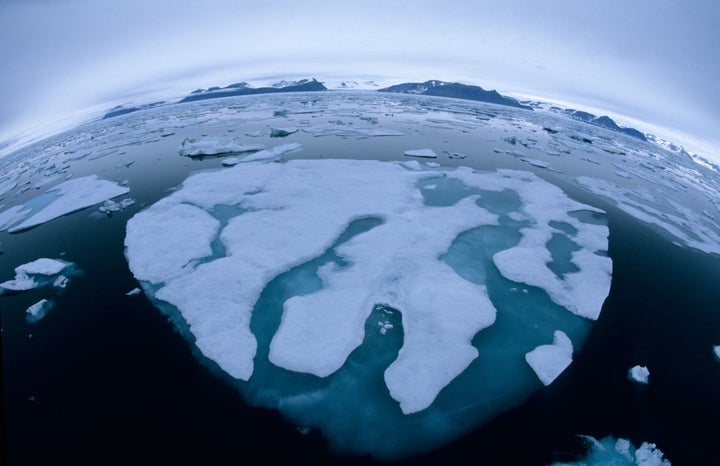
Sea ice coverage in the Arctic shrank this summer to the second-lowest level ever measured, and an energy and mineral rush is gathering steam in pursuit of nearly a quarter of the world's oil and gas. Meanwhile, a tanker ship has just set the speed record for crossing the Arctic sea in 6½ days.
At the same time, Vladimir Putin, prime minister of the country with the most Arctic territory, has proclaimed that the Arctic Ocean is going to rival the Suez Canal as a trade route, and that we are upon an era of Arctic industrialization. Even China -- with no Arctic land of its own -- is making significant investments to explore the region, which has a vast expanse of international waters that is for the first time becoming navigable.
We should proceed with caution in the Arctic. Home to eleven global "ecoregions," one-fifth of the world's freshwater, and one of the largest contiguous wilderness areas on earth, the Arctic should provide a store of resources for our future generations. But as Bellona Foundation's President, Frederic Hauge, explained at the BSR conference last week, those resources are vulnerable. There is a dearth of international governance, the remote and harsh climate makes toxic spills more likely to happen and their cleanup more difficult, and the region is inherently sensitive to impacts -- such as black carbon that degrades surface reflectivity and fragile land that takes a long time to recover after being disturbed.
Even more profoundly, our growing exploitation of the Arctic represents a first chapter in the world's efforts to adapt to climate change, and we need to start having serious conversations about what just and responsible business looks like as we adapt to a world with a different and uncertain future climate. How companies work among the four million inhabitants and ecosystems of the Arctic who are seeing globally-financed business for the first time will set the stage for adaptation everywhere.
In this vein, there are many things that companies should be doing which may not come naturally. Here are but three:
Listening before landing in new places. Not unlike the pursuit of lower labor costs in developing regions, companies are investing more in the Arctic in order to gain access to resources and to reduce transportation costs. Yet as they do, they will encounter indigenous communities with customary rights and access that may not be readily apparent or even visible in legal permitting processes. As the case of Nenets nomads in the Yamal Peninsula shows, companies would do well to avoid unnecessary conflict and controversy by taking into account prevailing customs and traditions of existing people. In practice, this means integrating informed, effective community engagement into planning and operations in new regions.
Making community projects climate-intelligent. Many global energy and extractives companies are already making investments in local benefits for communities, in some cases because they are required to do so by governments -- and in all cases because it is important to maintain a social license to operate. Yet, such investments face the potential of being degraded by climate change. In the Arctic, this comes most obviously from widespread destruction of buildings and roads in settlements built over permafrost that is thawing. Therefore, planning for investments in communities should include research into future expected weather in order to make infrastructure more resilient when necessary, re-think projects when warranted, and double-down on investments where the payback looks greatest.
Strengthening the base of the pyramid. Climate change is anticipated to cause disproportionate hardship for those at the margins because they have fewer resources with which to respond to changes in their environment and economies. In the Arctic, Inuit communities with low socioeconomic power are seeing erosion of the biophysical resources upon which their livelihoods depend. As communities experience increasing resource constraints, many people will be trapped where they are -- thereby reducing social cohesion and community stability. Companies should therefore look for ways to make concerted investments in populations that are particularly vulnerable, such as by sharing knowledge and results of climate-related research.
The unmistakable change happening in the Arctic represents one of society's first forays into climate change adaptation. The physical transformations already occurring provide business with the opportunity to take practical steps for more shared value today, while setting examples for how to advance just and sustainable business as we move into a much more uncertain future.